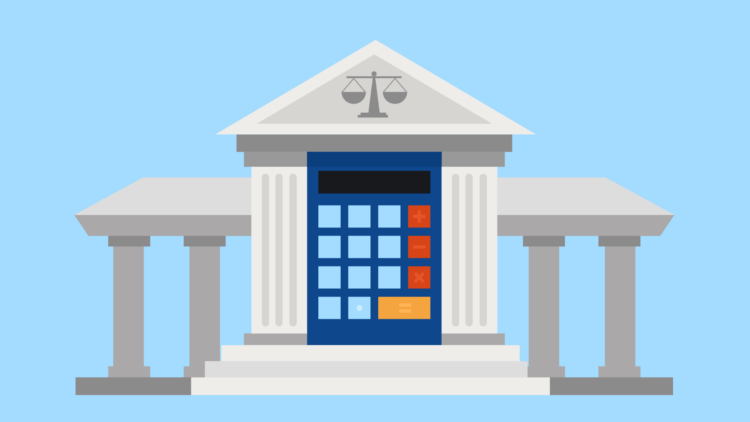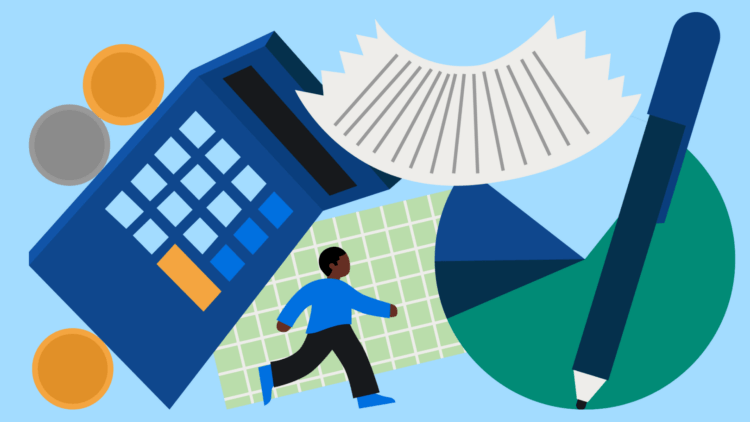Time is money—especially when it comes to how many billable hours in a year an attorney can accumulate. Thankfully, using a billable hours chart can help.
Lawyers work hard, and they work a lot. Many firms expect attorneys to reach minimum billable hour requirements ranging between 1,700 and 2,300 hours per year. According to the 2021 Legal Trends Report, lawyers spend just 2.5 hours each workday on billable work. It’s clear that lawyers must find ways to track their hours as effectively and accurately as possible to reach their targets—without losing valuable time on the act of tracking.
With this in mind, there are tools that lawyers can use to make it faster and easier to calculate and log their hours—like a billable hours chart. By billing in standard time increments and using an attorney billable hours chart, you can spend less time trying to calculate your billable hours manually.
This blog post will explore how a billable hours chart can help lawyers better track time for invoicing. Also, we’ll cover how other tools can make tracking attorney hours even easier and more accurate.
(If you’d like to skip ahead to a solution that helps keep your billable hours logged and on-track with minimal effort, see how it works in Clio Manage! Book a demo today.)
What is a billable hours chart?
A billable hours chart is an attorney billable hours template. It is a simple table to help you quickly calculate how many increments of an hour to charge, based on how long you worked. When tracking billable hours manually with a billable hours chart, most lawyers adhere to 1/10th of an hour (aka six-minute) increments.
Why do lawyers bill in six-minute increments?
Billing six minutes at a time is standard practice for practical reasons: Manually billing by the minute or in smaller increments is difficult and time-consuming to track and calculate by hand. Conversely, billing in larger increments could lead to excessive padding, leading to unhappy clients overpaying for legal services. Six-minute periods are easy to calculate with the help of a billable hours chart, and they allow for reasonable increments without rounding up by too much.
A sample billable hours chart
To quickly calculate what to charge for portions of an hour worked, use the chart below as a reference. The chart uses increments of 1/10th of an hour. For example, if you worked for 15 minutes at a rate of $100 per hour, you could use the chart to see that the time increment is 0.3. So, 0.3 x $100 = $30 to bill.
| Time Increment | Minutes |
| 0.1 | 1-6 minutes |
| 0.2 | 7-12 minutes |
| 0.3 | 13-18 minutes |
| 0.4 | 19-24 minutes |
| 0.5 | 25-30 minutes |
| 0.6 | 31-36 minutes |
| 0.7 | 37-42 minutes |
| 0.8 | 43-48 minutes |
| 0.9 | 49-54 minutes |
| 1.0 | 55-60 minutes |
You can also use a billable hours calculator to help expedite the process.
You may like these posts
Best practices for billable hours

Knowing and following reasonable standards for billable hours can help ensure that you and your firm can bill efficiently and effectively. A billable hours chart can help you accomplish this. At the same time, you can ensure your clients receive the best possible service and experience. The following law firm billing best practices are essential:
- Be client-centered. To run a successful, client-centered law firm, you need to prioritize your client’s experience. Have clear policies to explain rates and billing practices to clients from the start. For example, how often you will bill them. Communicating clearly can help manage clients’ expectations regarding billing and payment.
- Track time accurately. Whatever method you use, track your billable time accurately—and in real time, if possible. If you track your hours as you go, you’re less likely to lose out on hours that you forget about when tracking at the end of the day (or week, or even month).
- Avoid block billing. While it might be faster to bill for blocks of time, list tasks separately for accuracy, accountability, and clarity to clients.
- Be detailed. Use detailed but succinct descriptions to ensure clear, transparent billing. Descriptions should provide enough essential information for clients to understand what they’re paying for.
- Don’t pad hours. You may be tempted to round up to an even hour when billing, but padding hours unnecessarily is inaccurate and unethical.
Do lawyers need a billable hours chart?
While a billable hours chart can reduce the time manually doing the math when calculating billable hours, there’s also a better, more accurate and efficient solution: Legal technology.
Managing billable hours with legal practice management software

Using a billable hours chart can save you time when calculating your billable hours. But legal practice management software does more. Legal practice management software saves you time, while also making tracking hours easier, more convenient, and more accurate. Using legal practice management software like Clio Manage makes managing billable hours easier in multiple ways:
- Simplified time tracking. Clio’s legal time and expense tracking software lets you easily log work time directly from where you work. You can add time entries from your calendar events, tasks, communication logs and emails, and documents.
- Automatic increment calculation. Instead of manually calculating or using a chart to determine time increments, Clio lets you pre-set rates and automatically round time entries to the increment. This way, you are more accurate without spending time and energy manually calculating or referring to a billable hours chart.
- Real-time recording. Clio’s software lets you set a running clock to record time while you work on a task.
- Tracking on the go. With the ability to capture time entries via Clio’s mobile app, you can easily record your time while you’re on the go or working remotely—so you don’t miss out on forgotten hours.
In addition to making it easier for you to track and log hours, time tracking software like Clio Manage further improves your billing process by letting you create time entries for your bills with a single click.
Conclusion
Tracking hours for invoicing in the most efficient, accurate way is key to lawyer productivity and maximizing billable hours. Whether you use a billable hours chart to calculate time tracking faster or a tool like legal practice management software, you need to have a clear time tracking system and follow best practices. By tracking time more accurately, you can help yourself meet billable hours targets. You’ll also ensure clients are invoiced correctly and clearly, contributing to an optimal client centered experience.
To keep your hours on-track with an easy-to-use legal practice management solution, book a demo with Clio today.
Note: The information in this article applies only to US practices. This post is provided for informational purposes only. It does not constitute legal, business, or accounting advice.
What are billable hours for lawyers?
Billable hours for lawyers are the attorney work hours billed to clients for activities that are directly related to client matters. Attorney work not related to client matters, such as professional development, client development, and office management, is considered non-billable.
How do lawyers track billable hours?
Lawyers can track billable hours with a billable hours chart, which will save them the time, effort, and frustration of calculating the hours manually. Most lawyers bill in standard increments, with 1/10 of an hour (six minutes) as a common increment.
We published this blog post in June 2021. Last updated: .
Categorized in: Accounting









